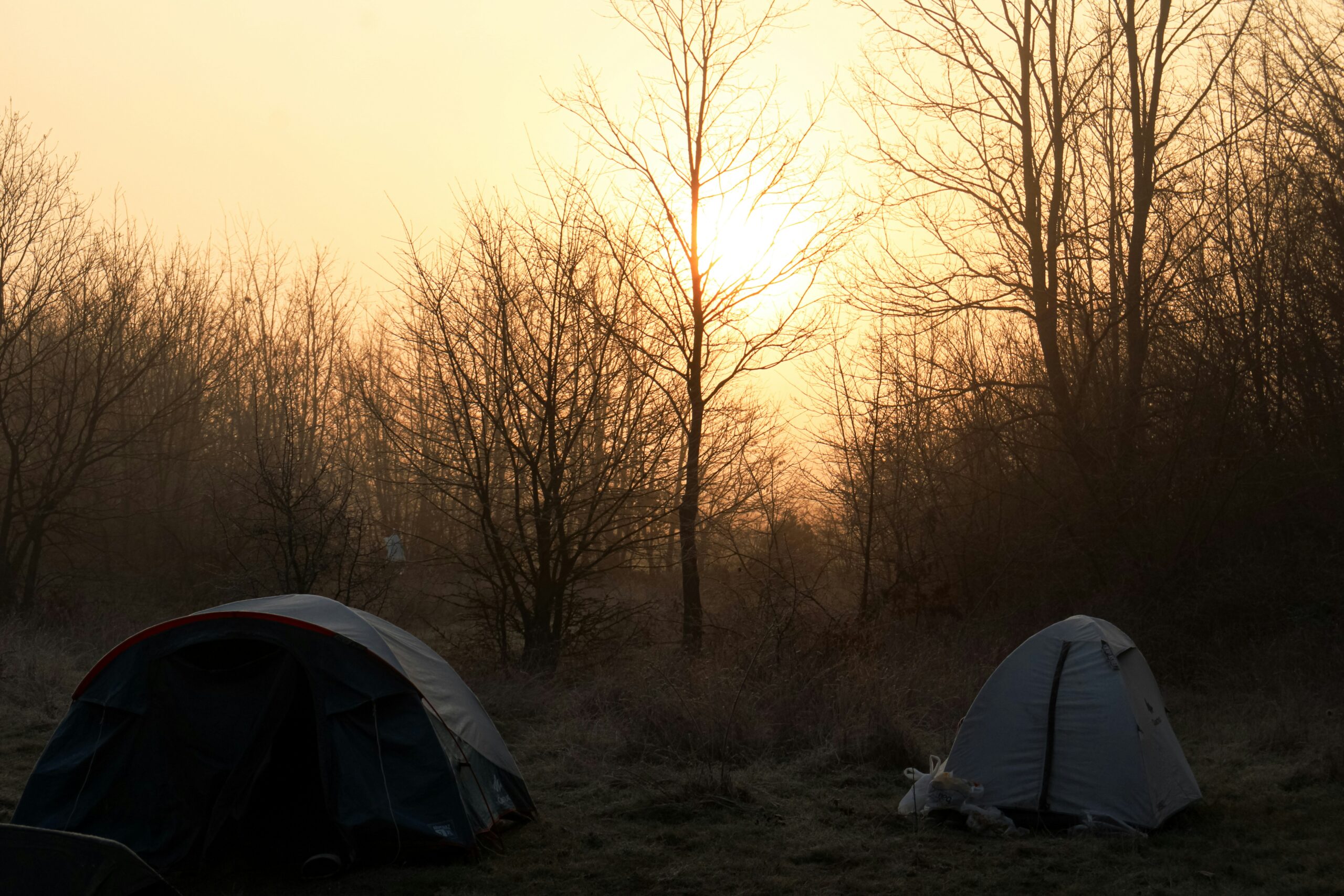The Ultimate Guide to Camping Tents: Choosing the Right Shelter for Your Outdoor Adventure

Understanding Different Types of Camping Tents
The selection of the appropriate camping tent is crucial for ensuring a comfortable outdoor experience. Various types of camping tents cater to diverse needs, each offering specific advantages and disadvantages. Understanding these can significantly improve your camping adventure.
Dome tents are favoured for their aerodynamic structure, which provides stability against wind. They are often lightweight and easy to set up, making them suitable for backpacking trips. However, they may have limited interior space and height, which could be a disadvantage for taller campers or those requiring additional room for gear.
Backpacking tents are specifically designed for those who prioritize weight and portability. These tents are compact and lightweight, designed to withstand various weather conditions. While they provide sufficient shelter for one to two people, they often sacrifice extra space and comfort to achieve their lightweight nature. Thus, they may not be ideal for larger groups or families.
Cabin tents are characterized by their spacious, vertical walls, allowing for ample headroom. They typically accommodate larger groups, providing enough space for cots and gear. Nevertheless, they can be bulkier to transport and more complicated to set up compared to dome tents. Cabin tents are excellent for camping with family and friends at established sites.
Pop-up tents are known for their quick setup. They can be easily unpacked and unfurled, making them a preferred option for beginners and casual campers. While they provide reasonable shelter, they may not withstand extreme weather conditions as effectively as more robust models. It is essential to assess your camping style and group size to determine which tent type aligns with your specific needs.
In summary, selecting the right camping tent involves considering various factors, including group size, camping style, and the unique features each tent type offers. By understanding the advantages and disadvantages of dome, backpacking, cabin, and pop-up tents, campers can make informed choices that enhance their outdoor experiences.
Key Features to Look for in a Camping Tent
When selecting a camping tent, understanding the key features that contribute to its performance and comfort is essential. One of the primary considerations is the tent material. High-quality tents are commonly made from polyester or nylon, with waterproof coatings that enhance durability and resistance to the elements. These materials not only contribute to the overall strength of the tent but also impact its weight, which is crucial for backpackers who need to carry their gear over long distances.
Another critical aspect to evaluate is the waterproof rating of the tent. Most camping tents come with a hydrostatic head rating, which indicates how well they can withstand water pressure. A tent with a rating of 1,500mm or higher is generally considered suitable for moderate to heavy rain. When camping in varying climates, it’s vital to choose a tent that can offer adequate protection against moisture while also providing breathability.
Ventilation systems are equally important to consider as they influence comfort during your camping experience. A tent with adequate mesh panels helps circulate air, reducing condensation, which can make the interior uncomfortable and damp. Look for models that allow for adjustable ventilation, which can be modified based on the weather conditions.
Weight should also play a significant role in your decision-making process. For those who plan to embark on long trekking trips, lightweight tents—generally weighing less than 5 pounds—are ideal. Additionally, the ease of setup cannot be overlooked. Tents with intuitive designs, such as color-coded poles or hub systems, save time and frustration during assembly, particularly after a long day of hiking.
In conclusion, selecting the right camping tent involves weighing various characteristics, including material quality, waterproof ratings, ventilation, weight, and setup ease. By focusing on these key features, campers can enhance their outdoor experiences and ensure comfort and protection, regardless of the terrain or climate encountered.
How to Properly Set Up and Maintain Your Camping Tent
Setting up your camping tent properly is essential for a comfortable experience in the great outdoors. Begin by selecting an appropriate location, which should be flat, dry, and free of debris. Look for a spot that offers some natural protection from wind, such as near bushes or under trees, but avoid areas where water might collect if it rains. Once you have identified a suitable location, clear the ground of any sharp objects, rocks, and sticks that could damage the tent floor.
Next, familiarize yourself with the components of your tent. Most camping tents consist of several key parts, including the tent body, poles, rainfly, stakes, and guylines. Before pitching the tent, lay out the tent body and identify where each pole connects. Typically, the poles will either slide into sleeves or attach to clips on the tent body. Assemble the poles according to the manufacturer’s instructions, ensuring they are not bent or damaged in the process.
With the poles assembled, insert them into the corresponding corners of the tent and lift the structure. Once the tent is standing, secure it to the ground using stakes, ensuring they are driven in at a 45-degree angle for optimal stability. Attach the rainfly for additional weather protection, if necessary.
Maintaining your camping tent involves regular cleaning and proper storage. After each trip, check the tent for holes or tears and patch them using tent repair kits available in outdoor stores. It’s crucial to clean the tent with mild soap and water to remove dirt, sap, and other contaminants, which may cause deterioration. Once the tent is entirely dry, store it in a cool, dry place, ideally inside a breathable storage bag. Following these guidelines will enhance your camping experience and prolong the lifespan of your tent, ensuring many enjoyable outdoor adventures to come.
Top Camping Tent Brands and Recommendations
When selecting a camping tent, the brand’s reputation often reflects the quality and reliability of its products. Several brands consistently receive positive feedback from consumers and outdoor enthusiasts alike. Notable among these are Coleman, REI, Big Agnes, and Kelty, each known for their commitment to quality and innovation in camping gear.
Coleman is a highly recognized brand that offers a range of affordable and durable camping tents. Their Instant Cabin tent stands out for its quick setup feature and ample space, making it ideal for family camping trips. Customers appreciate its robust weather resistance and user-friendly design, which ensures a comfortable experience even in less than ideal conditions.
REI is another top-tier brand that provides high-performance tents suited for various conditions. The REI Co-op Flash Air 2 tent, for instance, is favored by backpackers for its lightweight design and easy setup. Customers have praised its breathability and stability in windy conditions, highlighting it as a reliable choice for more adventurous campers.
Big Agnes specializes in innovative camping gear, particularly known for its tent designs that focus on lightweight materials without compromising durability. Their Copper Spur HV UL2 tent is noted for its exceptional balance of weight and livability, making it a preferred option among serious backpackers looking for a reliable shelter.
Kelty offers a blend of affordability and functionality with tents suitable for various outdoor activities. The Kelty Discovery 4 tent stands out for families seeking comfort and ease of use, featuring spacious interiors and straightforward assembly. Reviews often commend its quality construction and value for money, making it a popular choice for budget-conscious campers.
Choosing the right camping tent can balance quality, performance, and affordability. By considering these reputable brands and their respective models, campers can confidently select a tent that suits their specific outdoor needs while remaining financially prudent.




Leave a reply